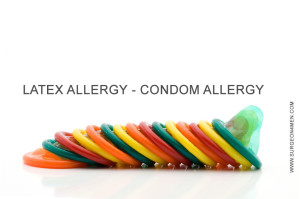Do’s And Don’ts Of Condoms
Condoms are classified under the most frequently used method of birth control among the general population. According to latest estimates 66% of the adult US population uses condoms as the only reliable method of contraception; primarily due to low cost (i.e. per unit condom cost is only $0.04). However, the condom use is declining in adolescents. According to a new survey, less than 50% teens agreed to regular condom use. Besides birth control, condoms are also helpful at minimizing the risk of STD transmission (as well as serious infections like HIV).
Although not as popular, but there are condoms for females as well. Female condoms gives women more freedom and control to minimize the risk of an unwanted pregnancy as well as protection against sexually transmitted infections and HIV. It is imperative to mention that benefits of condoms are observed only if the individuals use them consistently and correctly.
Here are some Dos and Don’ts of condom use:
Do’s Of Male Condom Use
- Always use latex condoms. If you or your partner is allergic to latex, you can also use plastic (polyurethane) condoms (3).
- Make sure to store your condoms in a dry and cool place (free from moisture, heat or direct sun exposure).
- Put on the condom when penis is erect/ hard. Make sure to avoid coming in direct contact with the genitalia of your partner before putting on the condom.

- Always remember that condom use may reduce natural vaginal lubrication; thereby making vaginal sex little discomforting. It is highly recommended to use copious amounts of vaginal lubricants to reduce friction.
- In order to minimize the risk of accidents or mishaps, it is important to hold the condom at the base of penis while pulling out after intercourse.
- Make sure to properly dispose-off your condom after use.
Don’ts Of Male Condom Use
- Always unroll the condom on your hard penis. Do not attempt to unroll it on the fingers/ hands.
- It is ideally recommended to avoid oil-based vaginal lubricants with latex condoms. This is mainly because, oil present in these lubricants may lead to early degradation of latex; thereby making it more vulnerable to damage/ tearing with minor friction. Some examples of oil-based lubricants are; cooking oils, Vaseline, petroleum jelly, hand lotion or baby oil. For best results use water-based lubricants.
- If you are looking for anal sex, concurrent use of water based lubricants and latex condoms may aggravate the risk of STI transmission. Therefore experts recommend using silicone based vaginal lubricants for anal sex.
- Always check the expiry date of your condom. Do not use expired, old, or damaged condoms as the resilience and lubrication is generally lost in expired/ old condoms, which aggravates the risk of tearing.
- Avoid storing the condoms in hot places such as car, wallet etc.
- Never reuse a condom (not even on the same partner).
- Always maintain extra caution with some spermicidal jellies and other related chemicals as regular/ frequent use of these compounds can cause abrasion and irritation of genital skin, which may increase the risk of STI transmission.
- Avoid using your teeth or nails to open up the condom wrapper as this may lead to tearing of condom.
- Make sure to check your condom thoroughly before use. If your condom is even slightly damaged, do not use it.
References
1. Reece, M., Herbenick, D., Fortenberry, J. D., Sanders, S., Schick, V., Dodge, B., & Middlestadt, S. E. (2010). Findings from the National Survey of Sexual Health and Behavior (NSSHB)-Center for Sexual Health Promotion, Indiana University. Journal of Sexual Medicine, 7(S5), 362-373.
2. Haddad, L., Gallo, M. F., Jamieson, D. J., & Macaluso, M. (2012). Condom type may influence sexual behavior and ejaculation and complicate the assessment of condom functionality. Contraception, 86(4), 391-396.
3. Gallo, M. F., Grimes, D. A., Lopez, L. M., & Schulz, K. F. (2015). Non-latex versus latex male condoms for contraception (Review). Cochrane Database of Systematic Reviews, (1), 103.
4. Sanders, S. A., Yarber, W. L., Kaufman, E. L., Crosby, R. A., Graham, C. A., & Milhausen, R. R. (2012). Condom use errors and problems: a global view. Sexual health, 9(1), 81-95.

